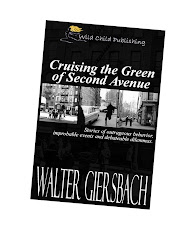Travel west in New Jersey on Rt. 70 to about
mile marker 28 and you’ll see a sign for Mt. Misery Rd. on your left. You may not have driven this two-lane asphalt
before, but plenty of teenagers are reputed to take their dates down the creepy
road that gets narrower and narrower as the trees form an overhead canopy.
And then the kids begin to tell
ghost stories. In fact, many report strange
tales like this one on chat rooms like AlienHub.com: “As I was driving…I
didn’t realize how deep I had driven. As
a result of my stupidity, we became lost, trying all different ways, but could
not find anything that pointed us in the right direction. That’s when I noticed my three-quarter full
gas tank was now was empty to a point where the E-light was on. We were all starting to panic a little. Then we saw this huge, slow-moving object in
the night sky.
“This
giant thing in the sky was quieter than silence itself. My two friends kept telling me to go, but I
was not about to jet away from this amazing experience. So I stopped the car (but left it running,
totally disregarding the E-light), and stepped out to get a better look. It was breathtaking. It was even bigger than I
had originally thought and it was moving towards the car.
“The
underside was beautiful. Four bright
blue lights and two or three white lights. The shape of the object…kind of looked
circular, but not flying saucer. Whatever
that thing was it was moving too slowly and too silently to be anything
manmade. Then it was time to leave. Gas supply was running really low at this
point. Eventually, we made it back to the main road, and started on our journey
home. Over the tree tops we were still
able to see whatever it was [until] it finally disappeared. I looked at my gas-gauge. It was once again three-quarters full.”
Weird New Jersey
magazine has written of similar experiences.
Curious thing is that there is no
mountain and no misery on this stretch of road. In the 18th century, according to the Pine Barrens Tribune, French Huguenots
settled in this part of the Pine Barrens.
They named it Misericordia, a
place of mercy. Fast forward to 1947,
and the Pinelands Center summer camp was established at the end of the
road. The United Methodist Church of New
Jersey owned and ran the camp, open to everyone regardless of religious
affiliation. The 150-acre site is surrounded
on most sides by cranberry bogs and preserved forestland, including miles of
trails in Brendan T. Byrne State Park. It’s now a place for camping, retreats
and a conservation center.
The Pinelands Center is at 801
Mount Misery Rd., Pemberton. The main
office can be reached at 609-893-3352, and their Internet site is at www.pinelandscenter.org. It’s worth your time to take a look, but
there’s no guarantee you’ll encounter any ghosts or UFOs.















